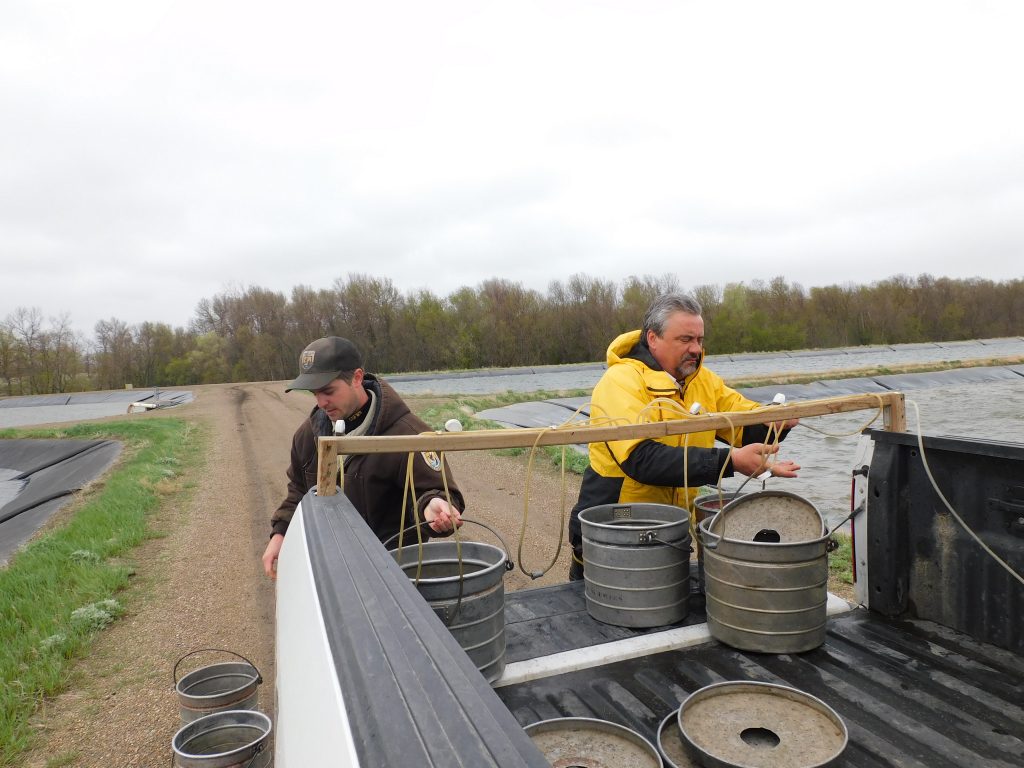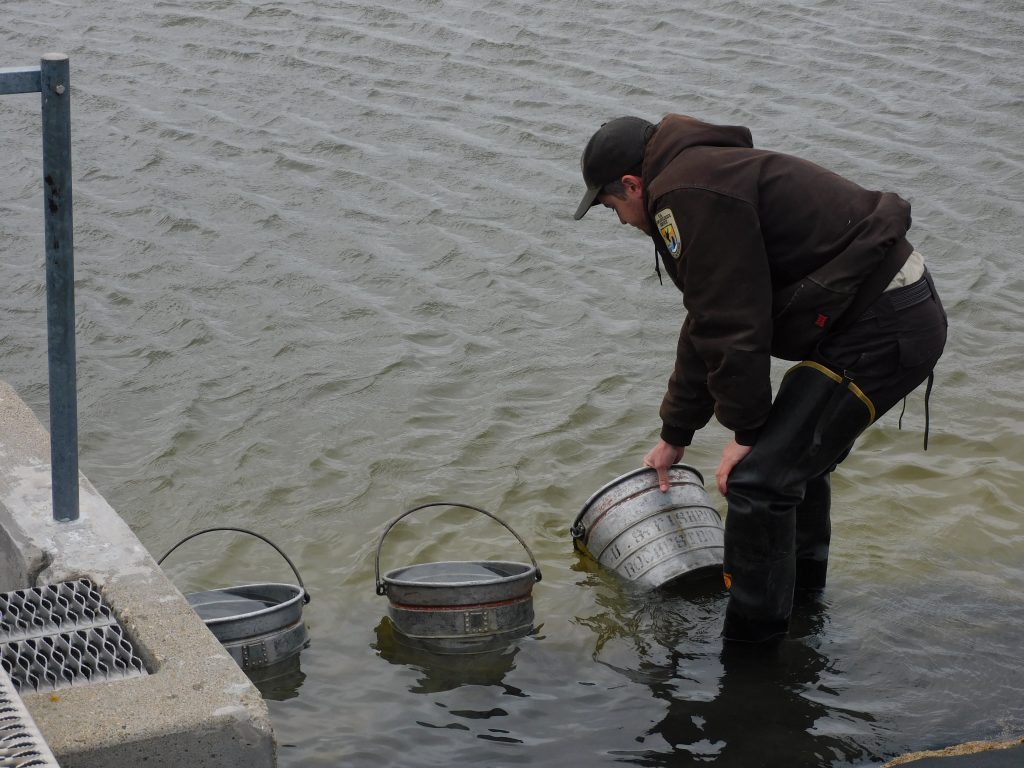

RIVERDALE — The Garrison Dam National Fish Hatchery is vital to sustaining fisheries across the state. It is there that the miracle of birth, the hatching of millions of fish, is carefully managed by seasoned biologists who have the experience to do so.
Each spring, Fisheries Biologist Jerry Tishmack oversees the development of millions of northern pike and walleye eggs -- paying close attention to egg quality, water quality and temperature, and hatching success. Each year his work rearing millions of fish for release into state waters benefits countless North Dakota sportsmen.
Fish eggs are harvested by North Dakota Game and Fish Department crews and transported to the Garrison Hatchery for hatching. This year a historic blizzard struck the state at the very time biologists were engaged in spawning operation, a major disruption.
The first northern pike eggs were taken on April 11 from Dry Lake, the remainder from nearby Devils Lake on April 29. High winds that accompanied the blizzard churned up the water on Lake Sakakawea, which is the water source for the hatchery.
“It was an absolute disaster down here,” said Tishmack. “The wind stirred up all the silt in the lake and northern pike do not like dirty water. Once you get dirty water on your pike eggs, they all clump up and turn into one big mass. It didn’t help, that’s for sure.”
A year ago, pike eggs that arrived in the hatchery had an astounding 80% hatch rate. Fifty percent is about average. This year’s hatching success for pike dropped to 24%. Furthermore, prohibitive weather conditions played havoc with hatchery operations.
In a normal year, the pike would hatch and be kept indoors for a short period of time while absorbing their life-sustaining yolk sack. Then they would be transferred to outdoor holding bonds and allowed to grow for several weeks before being stocked into the wild, a precaution biologists say increases survival. This year though, as soon as the pike hatched the tiny fish, or fry, were transported to stocking locations.
“We ran out of time. Everything was so late. When the pike were ready to go be transferred to the outdoor ponds I still had snow in the ponds,” explained Tishmack. “Even if they were filled with water you still need heat to make food in those ponds. It was freezing every night and we had walleye coming in. There was just no time to make northern pike.”
This year, added Tishmack, was the first time the hatchery hadn’t produced any pike fingerlings since 1962.
The spring schedule for walleye egg-taking was affected by the weather too. The effort that normally takes two to three weeks to complete happened in a hurry.
“All of the walleye eggs, all 420 quarts, were taken in three days on Lake Sakakawea,” said Tishmack. “Game and Fish had more gear in the water than ever, 24 nets.”
Game and Fish compiles a request for walleye production each year. This year it was 9.3 million, a large number that stretches the hatchery to the limit. However, barring unforeseen problems, the request will be met.
“We’ve got 64 outdoor ponds and every one is filled with walleyes,” said Tishmack.

In the ponds the newly hatched walleye will not be subject to predation from other fish, allowing them to feed and grow to fingerling size before being released into the wild.
The Garrison Hatchery also raises cold water fish – salmon and trout. Recently, salmon hatched and cared for in the hatchery were taken to a new home.
“We stocked 450,000 chinook salmon, 18,000 pounds of them, to Government Bay and Scoria Bay on Lake Sakakawea,” said Cole. “They were spawned last October and hatched in November. They grow fast, about five inches when they were released. Everything went well. It should be good fishing for them in a couple of years.”

In addition to salmon, Cole is tasked with the hatchery’s trout program. Many trout were released earlier this year.
“We did browns and two strains of rainbows,” explained Cole. “The tailrace got 16,000 Hot Creek rainbows and 13,500 brown trout. We also had 54,000 Shasta rainbow trout that went mostly to urban fisheries in the state.”